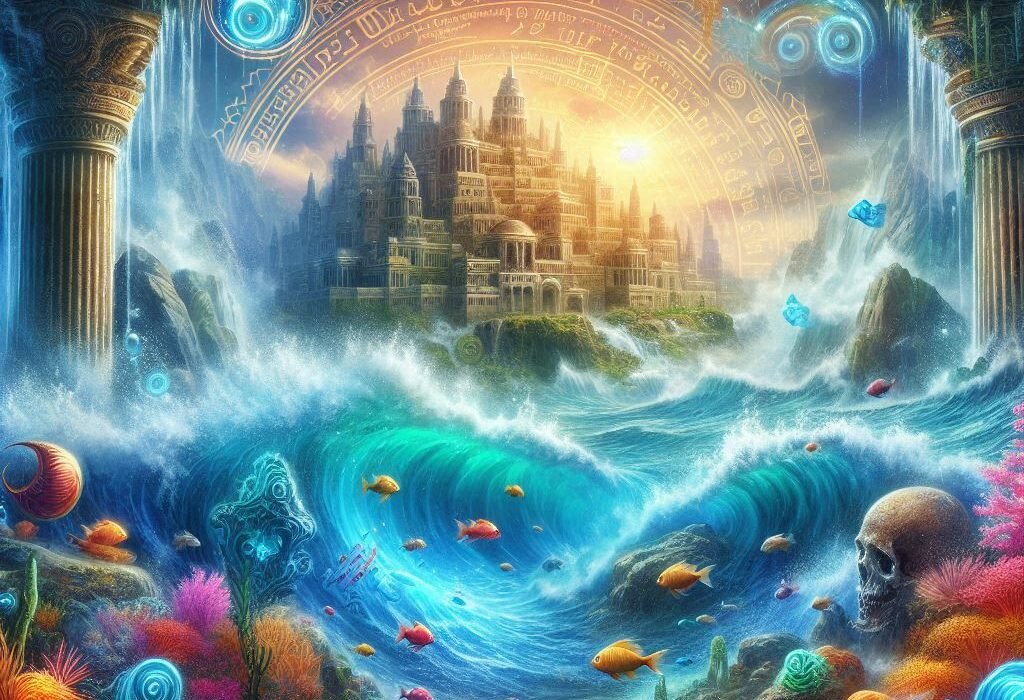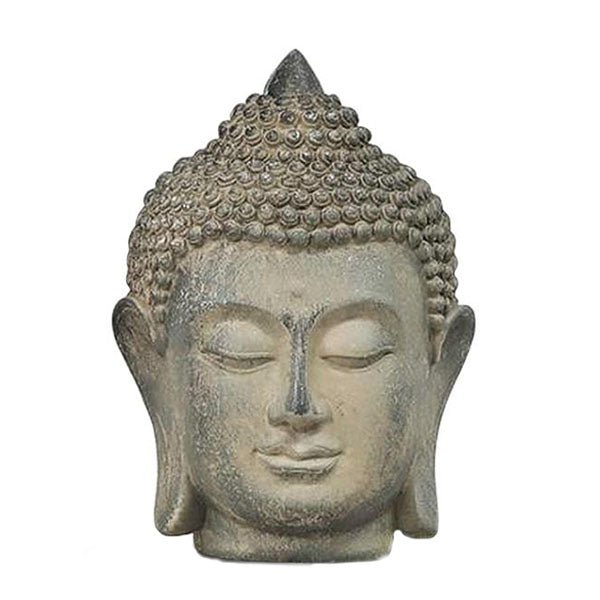Across the echoes of time, hidden beneath layers of stone, myth, and silence, lies a world humanity once knew intimately—a world where spirituality was not separate from daily life, science, or the cosmos, but rather the core that bound them all together. In our modern age of dazzling technology and scientific rationalism, we often perceive ancient civilizations as primitive or undeveloped. Yet, the deeper we dig—through ruins, sacred texts, and oral traditions—the more we encounter evidence of sophisticated spiritual systems rooted in cosmic understanding, harmony with nature, and inner transformation.
This is not the story of religious dogma, but of deep spiritual knowledge—knowledge that ancient peoples used to align their societies, heal their bodies, raise their consciousness, and connect with something greater than themselves. From the Nile Valley to the Andes, from Vedic India to Sumer, from forgotten jungle temples to sunken cities, a grand narrative emerges: one of spiritual wisdom lost, suppressed, or misunderstood—but not extinguished.
The Sacred Harmony of Ancient Egypt
To step into the temples of ancient Egypt is to step into a world humming with sacred meaning. The civilization of Kemet, as the Egyptians called their land, was built on a foundation of spiritual philosophy far beyond mere ritual or religion. Central to Egyptian spirituality was the principle of Ma’at—truth, justice, balance, and cosmic order. Ma’at was not just a goddess, but the universal law governing both divine and earthly realms.
Egyptian spiritual practice revolved around the soul’s journey beyond death. The famous Book of the Dead, better understood as The Book of Coming Forth by Day, was a guide for the soul’s transformation and ascension. Each soul, upon death, would be judged in the Hall of Ma’at, where the heart was weighed against the feather of truth. If it was found pure, the soul moved forward to the eternal fields of Aaru.
But their wisdom was not confined to the afterlife. The architecture of Egypt—especially the Great Pyramid of Giza—was encoded with astronomical, mathematical, and possibly energetic principles. Many researchers and mystics believe the pyramid was more than a tomb; it was a consciousness amplifier, designed to initiate spiritual seekers. The alignment of the pyramid with the stars, especially Orion and Sirius, reflects a deep connection between terrestrial life and celestial forces.
Priests and priestesses, trained over decades, were guardians of sacred knowledge. They practiced forms of meditation, sound healing, dreamwork, and even subtle energy manipulation. Some suggest they understood the chakras, or energy centers, similar to Eastern traditions, and used this knowledge to achieve states of divine communion.
India’s Vedic Mysticism and the Inner Cosmos
The Indian subcontinent, with its vast spiritual heritage, is home to one of the most complex and ancient systems of spiritual science: the Vedas. These ancient texts, dating back thousands of years, contain cosmological insights, philosophical treatises, and metaphysical systems that still guide millions today. But their origins, many argue, are even older than historians admit—possibly passed down orally from civilizations long before recorded history.
Central to Vedic spirituality is the idea that the outer cosmos is a reflection of the inner cosmos. “As above, so below”—a phrase echoed in later hermetic traditions—is deeply woven into Vedic thinking. The human being is a microcosm of the universe, and spiritual evolution is the process of awakening to that divine truth.
Practices such as yoga, pranayama (breathwork), and meditation were not simply health routines—they were tools for transcending the ego and reaching samadhi, a state of union with the divine. The ancient yogis mapped consciousness through chakras, nadis (energy channels), and kundalini—the coiled serpent energy at the base of the spine that, when awakened, leads to enlightenment.
The knowledge encoded in Sanskrit mantras, yantras (geometric symbols), and mudras (ritual hand gestures) shows a sophisticated understanding of vibration, frequency, and consciousness. Temples were designed as living mandalas, with every measurement, color, and symbol guiding the devotee toward inner alignment.
Perhaps most astonishing is the reference to advanced cosmology in ancient texts—the concept of multiple universes, the cyclical nature of time, and even descriptions of flying machines (vimanas) and cosmic battles. While many modern scholars view these as myth, others believe they are remnants of a spiritual science long lost to time.
The Andes: Mysteries of the Sun and Stone
In the towering Andes mountains of South America, ancient civilizations such as the Inca, Tiwanaku, and the mysterious builders of Puma Punku left behind more than stone ruins—they left whispers of spiritual traditions deeply attuned to nature, astronomy, and the movement of celestial bodies.
The Inca civilization, known for its engineering feats and solar worship, regarded the Sun not merely as a physical body, but as a divine being—Inti—who nourished all life. Their sacred city of Cusco was designed in the shape of a puma, symbolizing spiritual strength, and was aligned with solstices and planetary movements.
One of the most enigmatic sites is Machu Picchu, often referred to as a “spiritual university.” Its terraces, altars, and temples are situated to harness the energies of the mountains and the sky. Shamans still travel there today to perform rituals of transformation, drawing on energies they say have been present for millennia.
But older and more mysterious than the Inca are the megalithic ruins of Tiwanaku and Puma Punku in Bolivia. These sites contain stone blocks so precisely cut and placed that modern engineering struggles to replicate them. The purpose of these constructions remains uncertain, but some believe they were not only ceremonial but also energetic—used for star alignments, resonance, and perhaps interdimensional contact.
Andean spirituality centered on Pachamama (Mother Earth) and the apus (spirit beings of the mountains). Their priests, known as paqos, practiced energy medicine, dreamwork, and soul retrieval—methods that suggest a spiritual science of profound subtlety.
Mesopotamia and the Star-Born Sages
The land between the rivers—the cradle of civilization—Mesopotamia was home to the Sumerians, Akkadians, Babylonians, and Assyrians. While we know this region for its cuneiform tablets and epic tales, such as the Epic of Gilgamesh, beneath the surface lies a deep spiritual tradition intertwined with the heavens.
The Sumerians viewed the cosmos as a living entity, governed by divine beings known as the Anunnaki. While mainstream scholars see these as mythological deities, alternative historians suggest they may represent ancient teachers—or even extraterrestrial intelligences—who imparted knowledge to early humans.
Mesopotamian ziggurats—stepped pyramid temples—were not merely religious centers but possibly observatories or energetic devices. The priests, or baru, were trained in divination, astrology, and dream interpretation. They believed the stars and planets influenced not just the fate of kings, but the unfolding of time itself.
The Enuma Elish, their creation myth, speaks of cosmic battles and the shaping of Earth from divine forces—echoes of a spiritual cosmology rooted in both myth and metaphysical insight. The concept of fate (šimtu) and divine order (me) governed both human destiny and the movement of the stars.
Over time, much of this knowledge was absorbed and reinterpreted by later cultures, including the Hebrews, Persians, and Greeks. Yet the original Sumerian spiritual legacy continues to intrigue scholars and seekers alike, hinting at a lost wisdom encoded in symbols, stars, and stone.
China’s Dao, Alchemy, and the Breath of the Cosmos
Ancient China, with its millennia of uninterrupted culture, developed spiritual traditions that blended philosophy, medicine, alchemy, and cosmology into a unified whole. At the heart of Chinese spirituality is the Dao—the Way—the unseen force that flows through all things.
Laozi, the legendary sage of the Dao De Jing, taught that true wisdom comes not from action, but from stillness and alignment with the natural rhythms of the universe. This path of harmony extended to every facet of life: health, governance, art, and personal enlightenment.
Chinese alchemists sought not gold, but immortality. Their practices combined herbal medicine, internal energy work (neidan), and meditation to refine the body and spirit. They believed that by mastering breath, intention, and essence (jing), one could become a transcendent being.
The system of Qi—life energy—was central to Chinese spiritual science. Acupuncture, Tai Chi, Qi Gong, and feng shui are all based on the understanding that energy flows through meridians, and that balance within the body mirrors balance in the environment.
Their astronomical records were precise, not just for agriculture or governance, but because they believed celestial events reflected spiritual shifts. Eclipses, comets, and planetary alignments were moments of deep spiritual significance—messages from the heavens to those who could read them.
The Lost Libraries and the War Against Wisdom
Why did so much of this spiritual knowledge disappear? The answer lies in a tragic pattern repeated throughout history: the destruction of knowledge by conquest, colonization, and religious zealotry.
The burning of the Library of Alexandria—a beacon of ancient wisdom—may be the single greatest intellectual loss in history. That library likely contained texts from Egypt, Greece, Persia, India, and beyond. Later, during the colonization of the Americas, Spanish conquistadors destroyed thousands of Mayan codices, erasing complex spiritual systems forever.
In many cases, indigenous spiritual traditions were outlawed, their practitioners persecuted. Oral knowledge, passed down through generations, was disrupted or silenced. Sacred sites were built over, repurposed, or misinterpreted by conquerors who could not grasp their true purpose.
But spiritual knowledge does not die so easily. It persists in symbols, myths, rituals, and the quiet teachings of elders. It waits in the DNA of humanity, ready to be reawakened.
Conclusion: Reclaiming the Sacred Thread
In our modern world, a strange thing is happening. As science advances, it begins to echo what the ancients long knew: that consciousness is not a byproduct of the brain, but a fundamental part of the universe. That energy, vibration, and intention shape reality. That we are not separate from the cosmos, but living expressions of it.
Mystics, researchers, and seekers across the world are now piecing together fragments of this lost spiritual knowledge. Through sacred geometry, sound healing, meditation, plant medicine, and ancient texts, we are rediscovering what our ancestors knew: that the true path of evolution is not just physical or technological, but spiritual.
The ancients left us maps—not of territory, but of soul. They built temples not just from stone, but from purpose. Their chants, carvings, and alignments were not mere superstition, but keys to a higher understanding.
We stand now at a threshold. The past calls to us—not with fear or nostalgia, but with wisdom. It invites us to remember who we are, and to reclaim the sacred thread woven through all of human history. A thread of truth, balance, inner light, and cosmic connection.
We have not lost the wisdom of the ancients. It sleeps in us, and the time of awakening has come.






